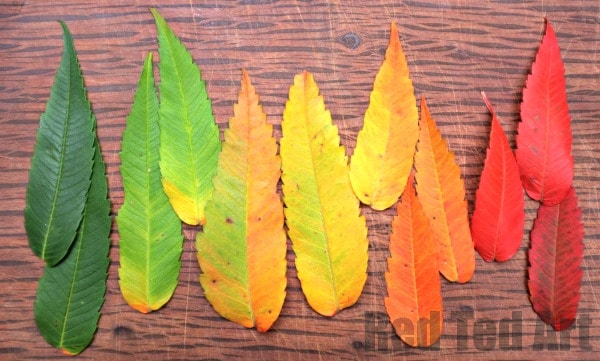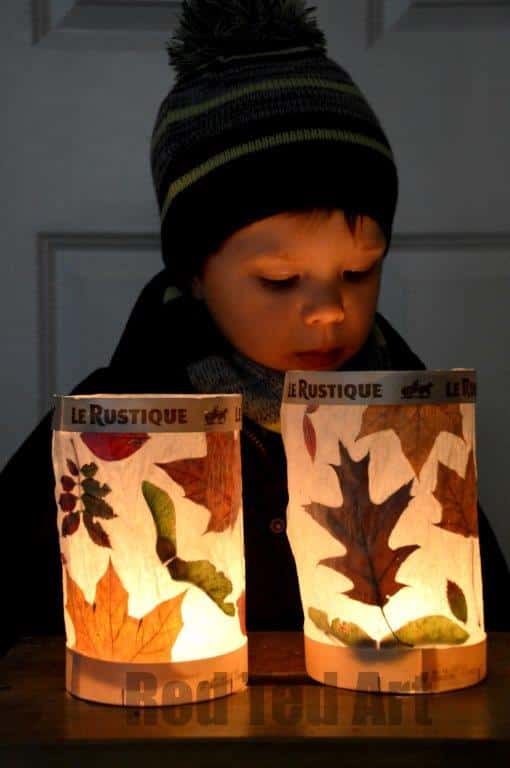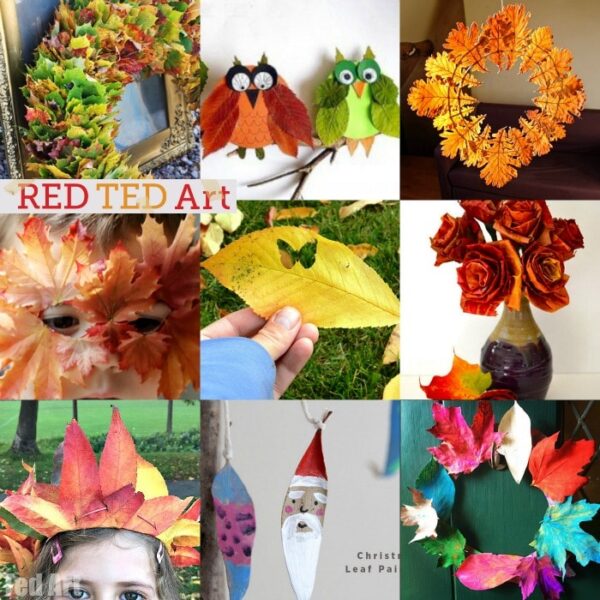How To Preserve Leaves (6 Methods)
We love Autumn and Fall Colours. And there is nothing better than some lovely Autumn Crafts for Kids this time of year. We particularly love working with nature finds this time of year and love the “rainbow” of leaf colours you get. But how to preserve leaves to keep these colours? Read on to explore 6 different methods for preserving leaves!
In our house we like to experiment! We like to try things out and see what works best and then come back and share our findings (a few years ago, I experimented with how to make a candle wick.. and shared what I found – and that went down a treat!). I find it particularly useful to experiment and share results, when the findings are, what I would call inconclusive.
What is the best way to preserve leaves?
When it comes to how to preserve leaves, we found.. well there is no real “best way”. There are lots of different ways to preserve leaves, but none, in my opinion, is best – for different reasons. But they are all good ways to preserve leaves, again, for different reasons. So I will list the most common leaf preservation methods (I confess, there is one we didn’t try – which is to wax your leaves, so I can’t compare ALL methods, but I can make an educated guess about the outcome for you).
The first thing to note when preserving leaves – is to SET YOUR EXPECTATIONS. Autumn leaves are stunning and beautiful – with bright reds and bright yellows.
It is incredibly HARD to preserve this brightness – especially for the reds. So just set your expectations and anticipate that final colours, will be lovely, but not as stunning. In a way, I am happy about that, because that way we appreciate nature year on year even more so.
I have created a short video about the Glycering Bath method and compare what the leaves look like to pressed leaves, laminated leaves and PVA leaves at the end (so watch the all of it!). Then BELOW the video, is a list of the different methods + the waxed leaf method, with some advantages and disadvantages highlighted!
How to Preserve Leaves Video
Watch our video on Auto Play or read through the instructions below, highlighting the pros and cons of each method!
So. Here we go – the most common leave preservation methods:
1. Pressing Leaves
Pressing leaves is easy and fun classic way to preserve leaves. You make sure your leaves are dry (pat them dry with some paper towel), place them between 2 pieces of newspaper and pile on some books. Or get yourself a fancy flower and leaf press!
Advantages pressing leaves:
- easy to do – you just need newspaper and books
- you get nice flat leaves, which are great for making collages and other crafty projects
- Greens & yellows tend to do well – but eventually they will darken and go brown too
Disadvantages pressing leaves:
- it takes a few days (though 1 or 2 days is usually enough before starting a craft project)
- leaves become delicate and brittle
- I find that you tend to “loose” the red colours the most (though yellows and oranges/ browns seem to do well)
2. Laminating Leaves
You need a laminator, so not everyone can do this. It is important to make sure you leaves are properly dry (ideally press them a little for a few days)! Then feed the leaves through the laminator. My daughter “simulated” the laminator by taping up her leaves with tape (ha!). It worked surprisingly well.
We found that the laminating leaves was great for preserving colour INITIALLY, but that over time the colours would also darken and fade.
Advantages laminating leaves:
- sturdy leaves, great for play or hanging on walls and windows, but not other crafts
Disadvantages laminating leaves:
- cost of the machine and laminating plastics
- less eco friendly as using more plastic
3. Glycerin Bath Leaves
The glycerin bath method was new to us (and you can watch our video below to see how we did it and what we thought – in the video, we also show what the “laminated” leaves, the pressed leaves and the PVA leaves look like in comparison). For a glycerin bath you use 1 part glycerin (from the baking section in the supermarket) and 2 parts water to make your own special glycerin solution.
Advantages laminating leaves:
- the leaves are wonderfully subtle and feel “like real leaves”
- best for yellows
Disadvantages laminating leaves:
- cost of glycerine – isn’t hugely expensive, but if you want to do LOTS, then you would need to consider the cost
- takes 3-5 days
- you have to make sure you properly submerge all your leaves
4. PVA (White Glue) Leaves or can you preserve leaves with Modge podge?
PVA presevered leaves essentially means that you paint your leaves with PVA glue and let dry. Make sure you cover the whole leaf well and that you seal it all in the glue. Including the stems. This method works well enough, for leaf collage art – especially if you want it to be 3D, as the leaves will not stick flat (unless you have pressed them first!). Over time, leaves will darken.
Advantages PVA leaves:
- Most people have PVA handy and it is relatively inexpensive
- Great for green leaves, but again, colours will darken with time
- great for garlands
Disadvantages PVA leaves:
- It can be a bit messy! Especially if you want to cover both sides
- it is VERY dependent on the quality of the glue – good quality will result in much better leaves (obviously!!)
- it is still hard to preserve the wonderful colours
I do like these though and they make lovely relatively natural looking decorations! Almost like fresh leaves!
Pro tip: As an alternative you can try an acrylic spray from the craft store too! This is a little less messy and dries more quickly!
5. Waxed Tipped Leaves
This is one method, I have NOT done myself. In essence – you melt down a pot of white left over candle wax and dip your leaves, then hang to dry or place on baking paper to dry. Make sure you leaves are dry and not wet first.
Advantages laminating leaves:
- leave will look more life like and preserve the 3d shapes
- great for garlands
Disadvantages laminating leaves
- anything with molten wax is messy!
- not ideal for younger kids
- leaves can crack if the wax and crumble is too thick
I can only guess at how well the colours will keep.. but suspect it is like all of the above…. colours will darken over time. Reds will turn into magentas, yellows, will do well, but fade to light browns over time!
6. Wax Paper Ironed Leaves
This is essentially similar to the wax dipped leaves.. but the result is different in that your leave is flattened and the wax layer is much thinner. You will need old fashioned “waxed paper” – like that used for wrapping sandwiches – note: this is hard to find in the UK, but common enough in the US!
Take your waxed paper, put some on either side of your leave. Place on newspaper and old tea towels and iron. Take care NOT to get wax on your ironing board or iron!
Advantages laminating leaves:
- Flat leaves
- a good way to do lots of leaves quickly
Disadvantages laminating leaves
- paper may be hard to get hold of
- grown ups need to do it for kids
Can you microwave leaves?
I believe, as with flowers, you can indeed microwave leaves to help make the moisture evaporate and help dry them out. I confess though – the microwaving makes me nervous (the idea of exploding the contraption), so I would err on the side of caution and use one of the methods above!
No time to preserve leaves?
Here is a great Leaf Project that doesn’t need preservation first – but looks amazing and will last all Autumn – it DOES help if you flatten the leaves a little first – maybe just a day between some newspapers and a book!
Learn how to make LEAF LANTERNS here.
I have to say I feel that I am “inconclusive” about what the BEST method is – basically, it is hard to keep those beautiful reds and bright yellows, as the chemical make of these simply changes over time. In future, I would probably opt for ease – e.g. the pressing of leaves or laminating or PVA gluing depending on the project, over the “hassle” of glycerin baths” or mess of wax dipping!
So… please do leave comments below with your experience of preserving leaves and I can update this post as and when more information is shared! Happy Leaf Crafting!!!
How to preserve leaves
Instructions
- Pressing Leaves – between two sheets of newspaper and heavy books
- Laminating Leaves – dry leaves and laminate
- Glycerine Bath Leaves – soak in a water & gylcerine solution for 3-5 days
- Clear Glue Leaves – paint with glue and let dry
- Waxed tipped leaves – melt down wax and dip the leaves, hang to dry or place on baking paper
- Wax Paper Ironed Leaves – get waxed paper, place of leaves, add a tea towel and iron
Notes
Now you have preserved your leaves.. take a look at these 20+ Wonderful Leaf Craft Ideas:
This video tutorial is also available on YouTube




